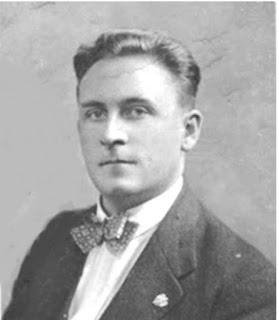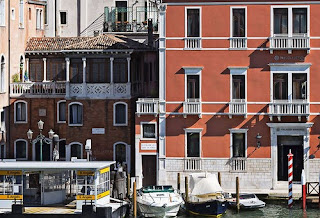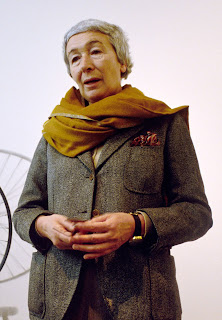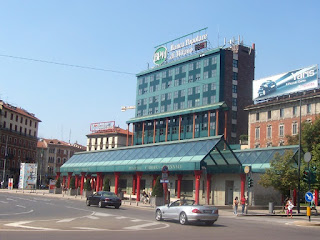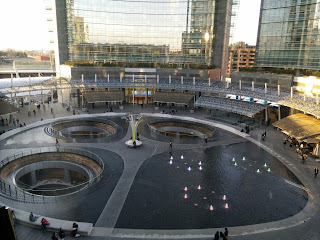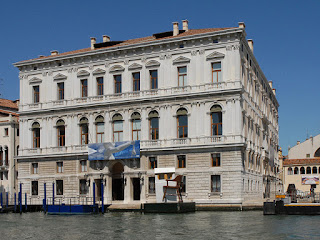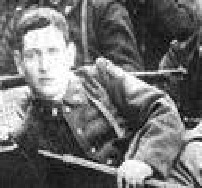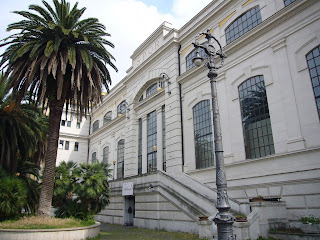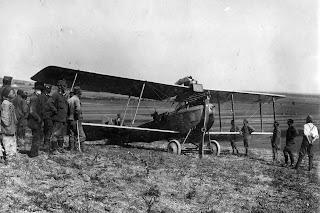Writer’s third published novel was international hit
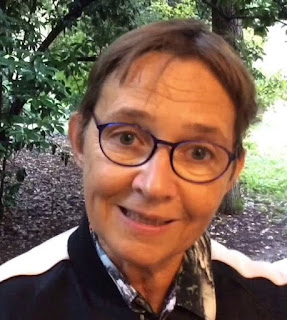 |
| Susanna Tamaro's novel is one of the biggest selling fiction titles in Italian literary history |
Va' dove ti porta il cuore - in which the main character, an elderly woman, reflects on her life while writing a long letter to her estranged granddaughter - has sold more than 16 million copies worldwide since it was published in 1994.
Only Umberto Eco’s historical novel Il Nome della Rosa - The Name of the Rose - has enjoyed bigger sales among books by Italian authors written in the 20th century.
Tamaro has gone on to write more than 25 novels, winning several awards, as well as contributing a column for a number of years in the weekly magazine Famiglia Cristiana and even co-writing a song that reached the final of the Sanremo Music Festival.
Born into a middle-class family in Trieste, Tamaro is a distant relative of the writer Italo Svevo on her mother’s side. Her great-grandfather was the historian Attilio Tamaro.
 |
| Margherita Buy and Virna Lisi in a scene from Cristina Comencini's 1996 movie version of Va' dove ti porta il cuore |
She was awarded a diploma in direction after making a short animation film entitled The Origin of Day and Night, taken from an Incas myth. After returning briefly to Trieste to work as assistant director on a feature film, she settled in Rome, where she would from time to time work for the Italian state television network, Rai.
She completed her first novel, Illmitz, in 1981 but it was rejected by every publisher she approached (it was eventually published in 2014) and it was not until 1989, when the Marsilio publishing house began a project aimed at launching a series of young unpublished writers, that she managed to make her literary debut with La testa tra le nuvole - Head in the Clouds.
The novel won two awards - the Italo Calvino Award and the Elsa Morante Award - which encouraged Tamaro to keep up her writing.
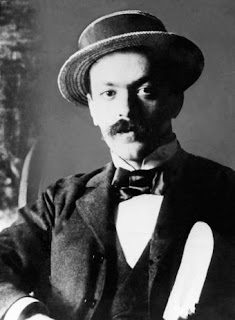 |
| Susanna Tamaro is related through her mother to the Trieste-born novelist Italo Svevo |
However, when Va' dove ti porta il cuore appeared in 1994, Tamaro became the toast of the Italian literary world, hailed as “a unique voice” whose story, while rooted in her native Italy, displayed “an understanding of human lives that is universal”.
The book was turned into a film in 1996, directed by Cristina Comencini and starring Virna Lisi and Margherita Buy. At the Turin Book Fair of 2011, it was named as one of the 150 most important books in the history of Italian literature. It has been translated into more than 35 languages.
Subsequently, Tamaro has written several bestsellers, including Anima Mundi, Rispondimi (Answer Me), Ascolta la mia voce (Listen to My Voice), Fuori (Outside) and her memoir, Verso Casa (Towards Home), many of which have been published in English.
In 1997 she collaborated with the songwriter Ron (artistic name of Rosalino Cellamare) to write a Sanremo entry for the singer Tiziana Tosca Donati.
 |
| Tamaro revealed recently that she suffered from Asperger Syndrome, a form of autism, as a child |
Since 1988 Tamaro has lived with the crime novelist Roberta Mazzoni, who invited her to stay in her home in Orvieto after she suffered a bout of asthmatic bronchitis, exacerbated by the smog and pollution of Rome. The two subsequently shared a cottage in Porano, a nearby village. Tamaro has insisted that their relationship has always been platonic, describing it as “a loving friendship.” Tamaro recently revealed that she suffered from Asperger Syndrome, a form of autism, as a child.
Tamaro’s novels have often conveyed her political views, including her opposition to abortion, surrogacy and euthanasia, but she declined an invitation to stand in the 2008 Italian elections on an anti-abortion ticket.
 |
| The Canal Grande is one of the attractions of Trieste, a port city with a great literary tradition |
The coastal city of Trieste, where Tamaro was born, is the main town of the Friuli-Venezia Giulia region. Officially, it became part of the Italian Republic only in 1954, having been disputed territory for thousands of years. It was granted to Italy in 1920 after the First World War, after which thousands of the resident Slovenians left. The final border with Yugoslavia was settled in 1975 with the Treaty of Osimo. The area today is one of the most prosperous in Italy and Trieste is a lively, cosmopolitan city and a major centre for trade and ship building. It has a strong literary tradition, having been the home of the Irish author James Joyce for more than a decade, during which he wrote A Portrait of the Artist as a Young Man, most of Dubliners and the outline of Ulysses. Joyce’s close friend, Italo Svevo, was one of several prominent writers born in the city, including the poet Umberto Saba and the essayist Claudio Magris. The 19th century French writer Stendhal and the English novelist DH Lawrence also spent time there.
 |
| Orvieto's beautiful Duomo - the Cattedrale di Santa Maria Assunta - is one of the finest cathedrals in Italy |
The small city of Orvieto in Umbria, with a population of only 20,000, has a dramatic appearance, built on the top of a cliff of volcanic tuff stone, its elevated position further emphasised by the defensive walls built by the Etruscans. Situated about 120km (75 miles) north of Rome, it boasts one of Italy’s finest cathedrals in Italy - the Cattedrale di Santa Maria Assunta - with a stunningly beautiful Romanesque Gothic facade inlaid with gold mosaics fronting a building constructed from alternate layers of black and white marble. The city’s medieval streets are a cultural paradise - busy with cafés and restaurants, bookshops, artisans' workshops and antique emporia.
More reading:
Why Alberto Moravia is recognised as a major figure in 20th century literature
The broad intellectual talents of Umberto Eco
How screen siren Virna Lisi turned back on glamour roles
Also on this day:
1685: The birth of composer Lodovico Giustini
1901: Marconi receives first transatlantic radio signal
1969: The Piazza Fontana bombing
Home

